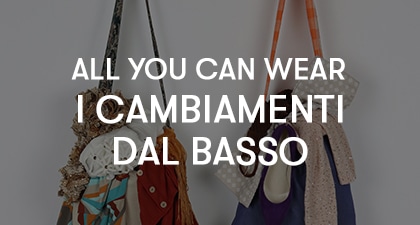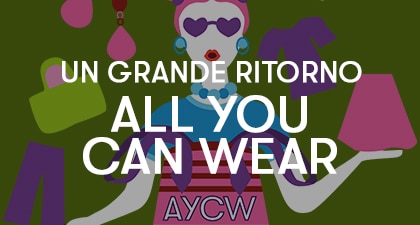Good lines, evil lines: pt. 3

With summer coming to an end, it won’t be long before striped fabrics, so popular this season, go into hibernation for a few months, making only a few timid appearances during the colder months. Therefore, we hurry to conclude our story about stripes with this third and final part. If you missed the previous episodes, you can find the first episode here and the second episode here.
Stripes and Hygiene
From the feudal era until the Industrial Revolution, in the West, garments in direct contact with the body had to be white. This rule stems, as we remember, from the medieval man’s view of the world, divided into very clear and as readable as possible categories. Irregular colors and patterns were disturbing and should be avoided, except for identifying the excluded and marginalized.

Taking a giant leap forward, we notice that this rule no longer exists today. Over the centuries, the evolution between neutral or white underwear and the introduction of colored underwear has been extremely slow, accompanied by two “helpers”: desaturated colors and stripes. On the one hand, pastel colors are considered “non-colors” and could even be seen as transitional colors. On the other hand, stripes helped the acceptance of color in underwear because they are a broken color, “halfway”.
From the 1920s to the 1940s, there is a perfect correspondence between pastel colors and striped patterns. The interesting thing is that this involved not only clothing but many other objects related to hygiene, the body, and the home: kitchen and bathroom walls, pool tiles, toiletry items, and so on.
This association between hygiene and stripes will certainly sound familiar: who hasn’t imagined a bathrobe, sheets, or a striped shirt? And all these stripes are usually thin and pale-colored.

Stripes and the Sea
At the end of the 18th century, sailors of the second class, those assigned to simple tasks and placed at the bottom of a hierarchy that saw them as mere manual laborers, began to dress in stripes. Stripes, in addition to identifying them as a category, once again became a symbol of negativity, marginalization, and submission.

During the 19th and 20th centuries, marine stripes moved to the beaches, in sports and leisure activities. Discovering the pleasures of the beach, Western society adopted the sailors’ uniform and transferred it to the shores. But stripes, as previously noted, are complicated and must be read on multiple levels: in fact, beach stripes, while inspired by the sailors’ world, also fulfill the hygienic functions described in the previous paragraph. For men and women of the Belle Epoque, going to the sea was a healthy and hygienic activity, as well as a form of entertainment.
A curious note: hygienists recommended white swimsuits, but white, when wet, becomes transparent. I bet you know what the solution turned out to be… Of course! White and blue, a dark color that can mask the transparency issue.
Stripes and Childhood
From the 19th century onwards, a very close relationship developed between striped clothing and childhood. In children’s wardrobes, we find the white/pastel color combination, which also conveys hygienic functions as we described earlier. If you think about it, stripes are indeed a fabric that doesn’t get dirty easily or, paraphrasing, is great at hiding stains.

When stripes enter the world of childhood, they also acquire playful meanings. Those who wear stripes give us a wink, showing self-irony, charm, and, in some cases, seem almost funny.
A brief mention should also be made regarding the presence of stripes in the sports world. In this area, all the meanings listed above come together: hygiene, playfulness, and the desire to show off and put on a performance (think of the acrobats and court jesters of the Middle Ages).
Stripes and Danger
To this day, stripes carry multiple meanings: on one side, the sailor, the athlete, the beachgoer, the clown, the child; on the other, the executioner, the madman, the prisoner, and the criminal. As often noted, stripes have evolved in an inconsistent manner. Between these two extremes, we find characters who wear stripes and take on the meanings of both ends, creating ambiguity and confusion.

One example: striped surfaces and fabrics have often been used by artists. Picasso, for example, wore both striped shirts and pants as a sort of disguised identity. Or artists have used them in their works: think of Daniel Buren, who fascinates and disturbs at the same time with his creations.
More on the “evil” side is the “Al Capone” stripe or pinstripe, born between the 1920s and 1930s and adopted as a distinguishing feature for American gangsters and mafia bosses.
In modern times, the negative connotation of stripes does not disappear but changes. They no longer evoke the Devil but, when used in a certain context, they tend to signal danger. The road signs are a clear example of this. Every red and white sign represents prohibition and tolerance together, highlighting the ambiguity of stripes, which are both guidance and barrier.
What’s particularly interesting is the parallel with the stripes seen on blinds and shutters: they are a screen that allows light to pass through, protects but does not imprison. This is the “filtering” quality of stripes (similar to that of bodily hygiene).
Sometimes stripes may not filter danger; in fact, they might attract it. Think of the Hitchcock movie “Spellbound,” which tells the story of a man with a fear of stripes due to his guilt over the death of a close relative. The construction of the images in this film constantly refers to the striped pattern through tricks like light/shadow games, train tracks, and so on.

This film represents the most disturbing extreme of stripes: when they, like a deafening, alienating, obsessive music, can lead to madness and represent the dark sides of the human mind.
This concludes our trilogy on stripes, and we hope we’ve captured your interest! For us, it has been one discovery after another, and reading “The Devil’s Cloth” by Michel Pastoureau was as gripping as few books are. Every morning we all get dressed and actively decide what to wear. And as lovers of vintage fashion, we can’t help but be captivated by stories like this, about costumes, eras, patterns, materials, and so on.
As with previous times, we invite you to immerse yourself in some clothing history by exploring a bit of vintage in the dedicated section of our website here.
Warm regards and see you soon for more exciting stories!








